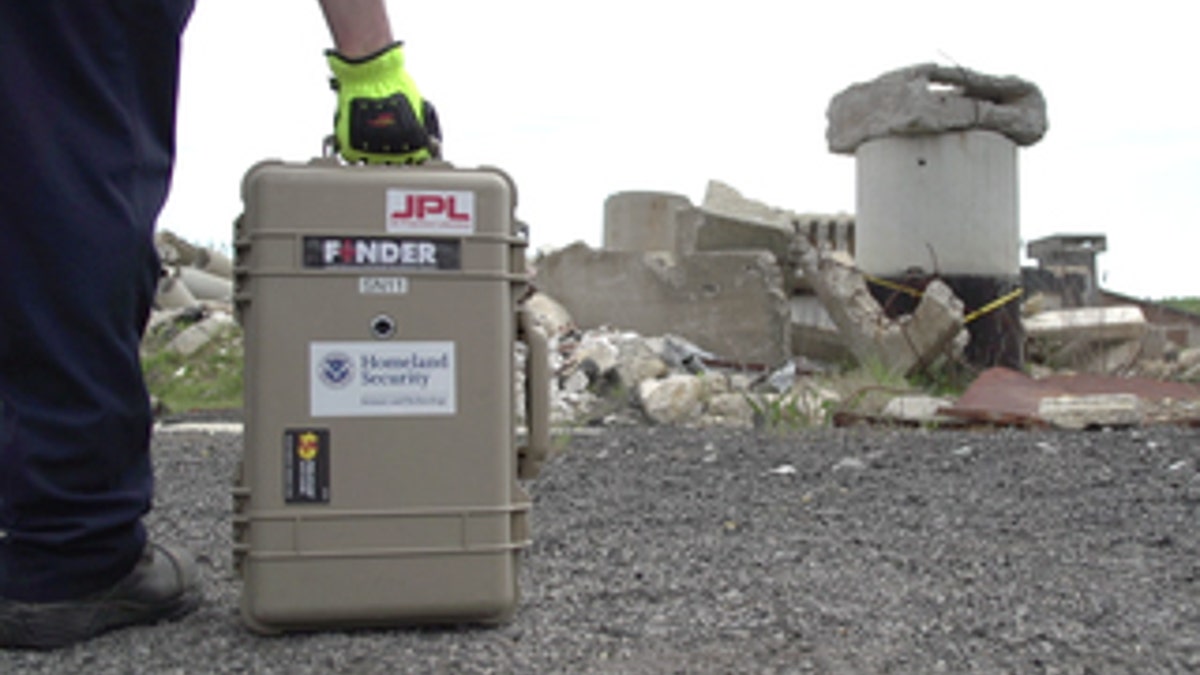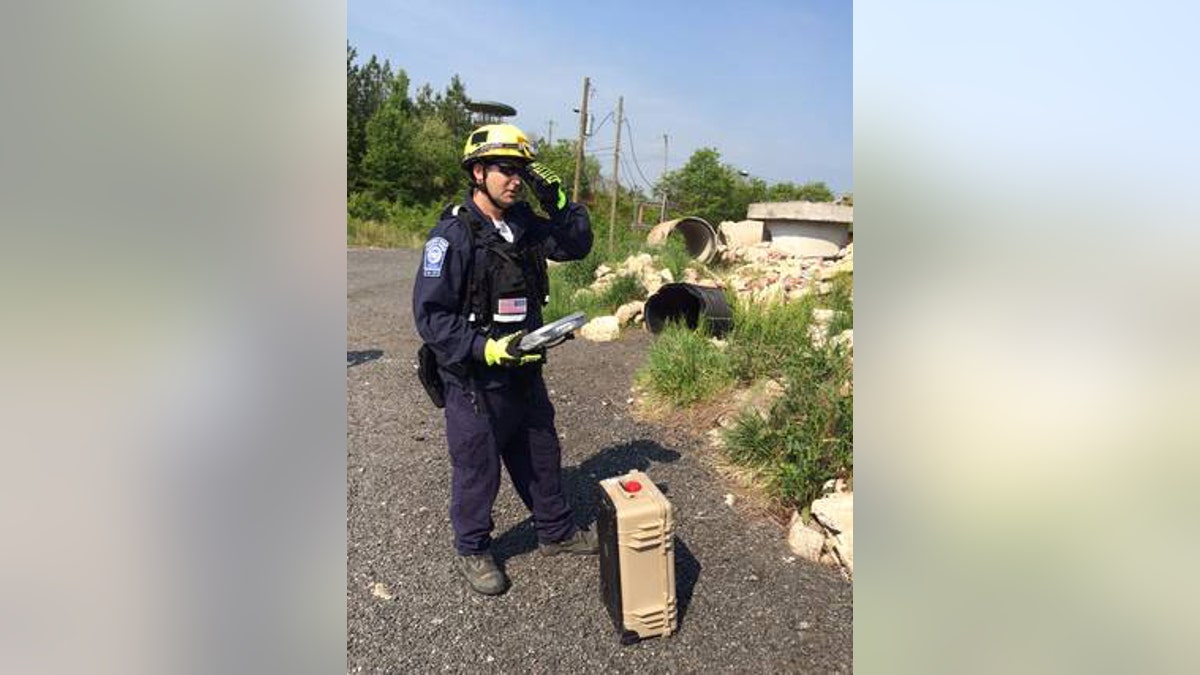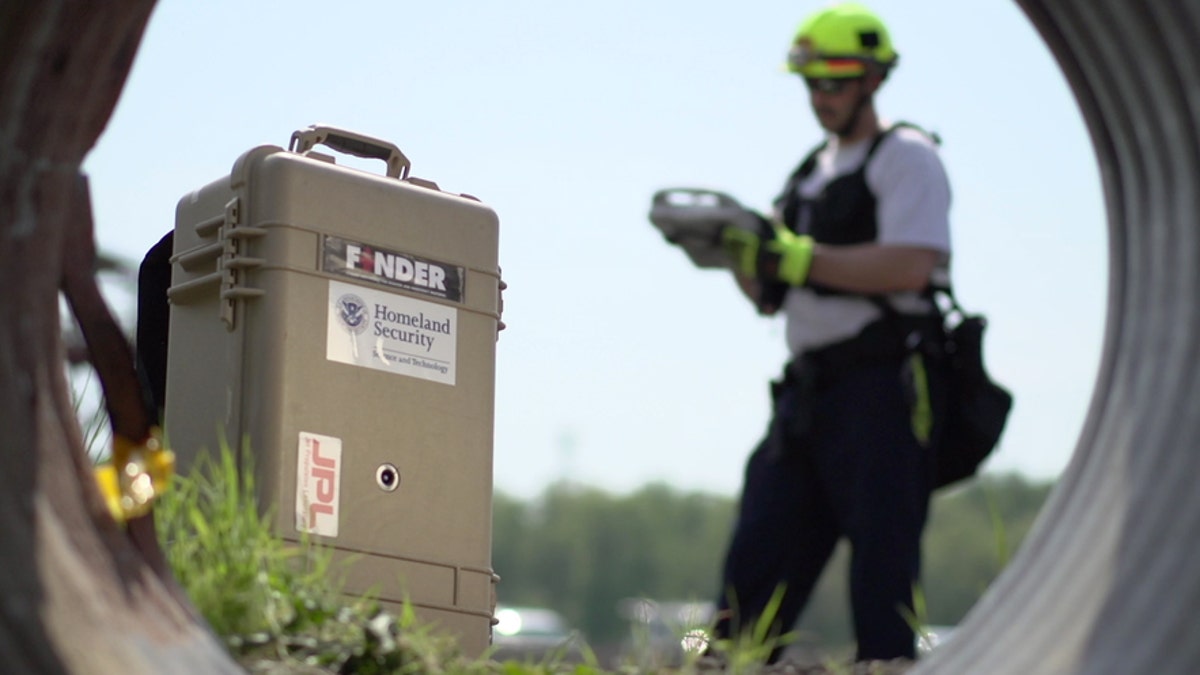
(NASA/JPL-Caltech/DHS)
While Google recently made news with a patent filing for drones that could provide emergency medical services, NASA has long been finding ways to take their innovative space-bound technology find a way to apply it to everyday life on Earth.
Most recently, NASA is taking their advances designed to explore the likes of Jupiter and Saturn and apply it directly to saving lives.
The NASA Jet Propulsion Lab team worked with the Department of Homeland Security to develop a version of this space exploration system to rescue humans in disasters. The cutting-edge Finding Individuals for Disaster and Emergency Response (FINDER) technology recently saved four lives in during a collapse of a textile factory and another building in village of Chautara in Nepal.

(NASA/JPL-Caltech/DHS)
What exactly is FINDER? It is a portable, lightweight, 20-pound radar detector that is about the size of an average suitcase. The detector is ideal for finding people trapped under debris from natural disasters like avalanches, earthquakes, and wildfires. The sooner a victim can be located, the sooner they can be rescued and receive medical care. The time it takes to find them can mean the difference between life and death.
How does it work?
FINDER locates people by sending out a low-powered microwave signal through the rubble. The signal is about a mere one-thousandth of a typical smartphone's output.
It then looks for changes in the reflections of those signals that reverberate back to the device. These changes are caused by the tiny movements a person may make.
In fact, when NASA tested FINDER, the detector could pinpoint a person’s heartbeat buried beneath a whopping 20 feet of solid concrete. It could also detect a heartbeat beneath 30 feet of rubble.
To systematically sweep a disaster zone, rescue teams can take a laptop and run the FINDER software. They can program this tech to scan a specific. It then analyzes the microwaves that bounce back.
FINDER seeks out typical human motions like the chest rising and falling while breathing. The program alerts the rescuers to where the signal is strongest to help narrow down the location. It is even so precise that is can differentiate between the heartbeats of a human and those of an animal.
NASA built four new FINDER prototypes in just one year. These prototypes underwent extensive testing by first responder teams in seven states — California, Florida, Georgia, Indiana, New Jersey, Oklahoma, and Virginia.
NASA engineers brought FINDER to search and rescue teams to test how the tech would perform in a range of disaster scenarios.
Saving lives
FINDER got to prove what it could do in its rescue of the four men in Chautara, which was impacted by the 7.8-magnitude earthquake that struck Nepal in April. The men were trapped under approximately 10 feet of debris like brick wood and mud. This was the first time that this detection technology was used in an actual disaster.

(NASA/JPL-Caltech/DHS)
“The true test of any technology is how well it works in a real-life operational setting,” aid Reginald Brothers, Department of Homeland Security’s under secretary for science and technology, in a release. Of course, no one wants disasters to occur, but tools like this are designed to help when our worst nightmares do happen. I am proud that we were able to provide the tools to help rescue these four men.”
NASA sees a lot of potential for FINDER, with the possibility for it to be applied to augment drone deployment to locate victims to even monitoring — from a safe distance — contagious patients who are kept in quarantine.
Ballet dancer turned defense specialist Allison Barrie has traveled around the world covering the military, terrorism, weapons advancements and life on the front line. You can reach her at wargames@foxnews.com or follow her on Twitter @Allison_Barrie.
